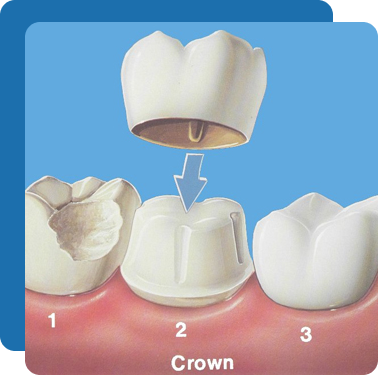Crowns & Caps
Two visits to the dentist are often necessary to put a crown. Your dentist in Oakville will assess the severity of your dental issues and the tooth's ability to sustain a crown during your first session. If a crown can be firmly placed on the tooth, the tooth will be filed down.
A temporary crown may be provided by your dentist after filing the tooth. A permanent crown will be constructed using an imprint of your teeth. Protecting the tooth while you get used to the feel of your new crown, the temporary crown is a great solution. The crown will be placed at your follow-up visit after it is done.
After the temporary crown is removed and replaced, the permanent crown will be fitted to the tooth and the mouth to make sure it fits precisely. Before attaching the crown, your dentist will examine the tooth and make any required adjustments. Secure it in place and avoid loosening or slipping it off by gluing it to the tooth. Your crown may seem foreign at first, but after some time it will blend in seamlessly with your natural teeth.
Motives for Crown Installation
According to the advice of your dentist, a dental crown may be used to accomplish any of the following objectives: In addition to restoring the beauty and functioning of teeth, replacing obsolete or deteriorating fillings, protecting teeth from fractures and breaks, affixing partials and bridges to teeth, and concealing dental implants once they have been installed are all services that are offered. protect teeth after having a root canal performed.
Porcelain Inlays & Outlays
Although your teeth are often relatively sturdy, they are nonetheless susceptible to being damaged. It is possible, for instance, for teeth to develop cavities (also known as tooth decay) if proper oral hygiene practices, such as brushing and flossing on a consistent basis, are not maintained. Moreover, teeth might be damaged by traumatic experiences or stress. The use of a dental filling may be an efficient method for treating minor damage, such as cavities,however, the application of a crown may be required for more severe decay or damage. However, there are situations when the damage is located in the center; a filling would not totally fix the problem, but a crown would need more extensive dental treatment to be performed. In rare circumstances, a dental inlay or onlay can be the solution to the problem.
Both of these restorations are made precisely for each individual patient since they are glued to the tooth or teeth that have been injured. Because of this method, they are able to properly heal damage, restoring a tooth to its former appearance and functionality.










